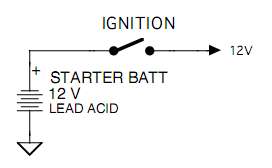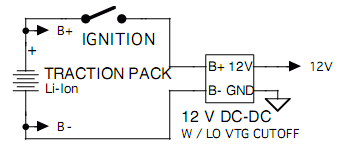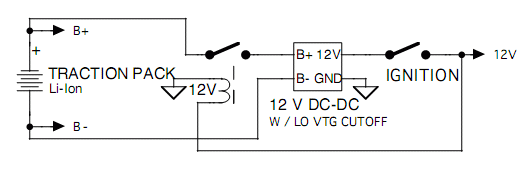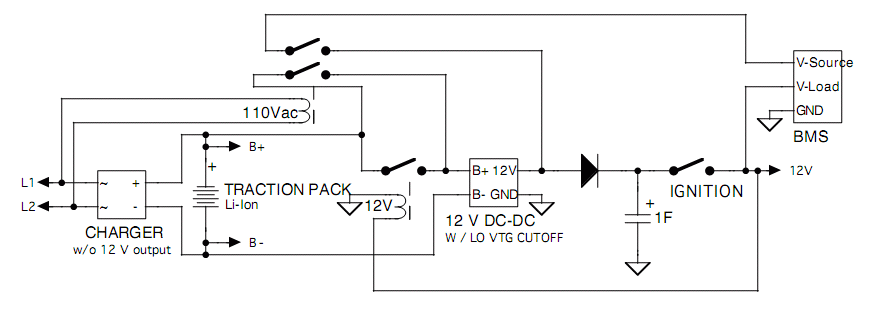 Li-Ion BMS
Li-Ion BMS
|
Home White Paper - The Ignition Switch conumdrum Where to wire an ignition switch in an EV with a Li-Ion traction pack 
In a standard car, the ignition switch is in series with a 12 V lead-acid battery. Some loads are powered through the ignition switch, some are powered directly. If you leave the car parked a long time, the loads that are powered directly will eventually discharge the 12 V battery completely. That's bad, but not terrible, as you can still jump start the car. 
Standard car ignition. That approach may or may not work in an EV powered by a Li-Ion traction battery. That same approach works if a 12 V lead-acid battery is used, though with some disadvantages.

Using a 12 V Lead-Acid battery. Alternatively, if a 12 V DC-DC converter is used (instead of a 12 V lead acid battery), the ignition switch can be installed between the traction battery end the DC-DC converter. That does have a couple of limitations:

Ignition between pack and converter. Your next approach may be to power the DC-DC converter directly from the traction battery, so that 12 V is always available

Converter always on. If it is not acceptable to operate the ignition switch at high voltage, you may be tempted to drive a relay that powers the DC-DC converter from a 12 V ignition switch. However, that will not work: you will be able to turn off the EV, but you will not be able to turn it back on:

Relay between pack and converter. Here is a circuit that will overcome all of these issues.


Using a supercap; charger w/o 12V output (top) and with (bottom).
Davide Andrea, Elithion, 4/17/09 | ||
© 2008~2025 Davide Andrea. All rights reserved, except where noted by CC mark. Page published on Nov 08 2009. Graphic design by morninglori